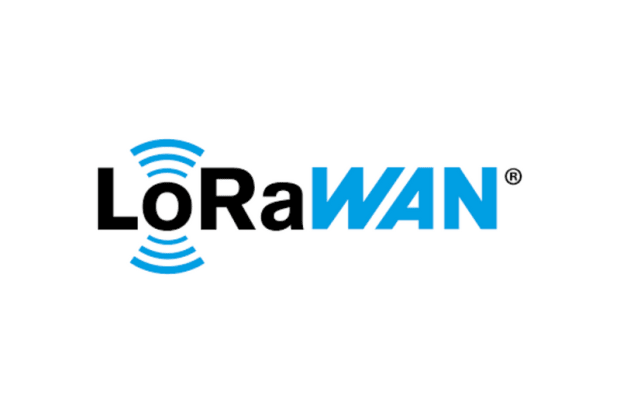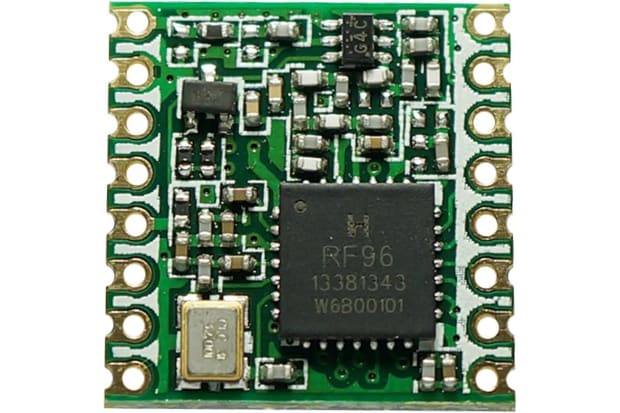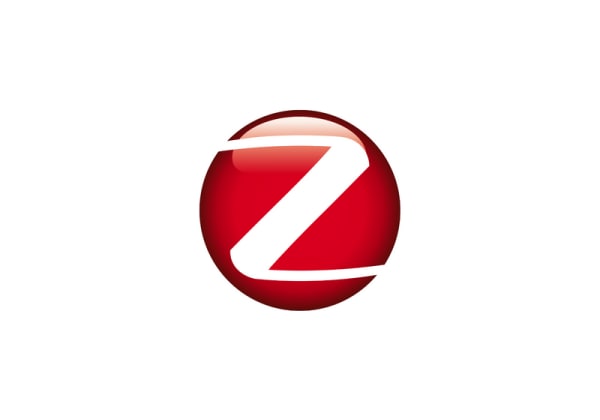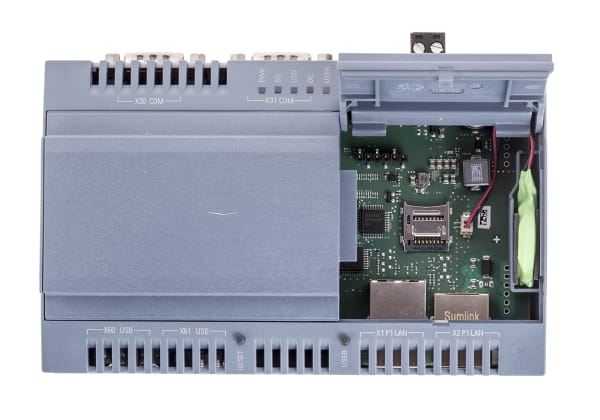- Published 14 Jun 2023
- Last Modified 29 Aug 2023
- 6 min
Guide to LoRa
LoRa is a communication and network protocol that is designed to transfer data using lower power across a wider range.

As the ways we need to communicate and share data change, so does our need for product diversity. In this guide, we explain what LoRa is and how it works, as well as its advantages and its applications.
What is LoRa?
With many ways to send and share data today, various protocols can assist in this task. LoRa stands for Long Range and is a wireless network protocol that uses radio communication to transmit data over wide areas and bandwidth.
LoRa is actually a very recent technological development, as it was only invented in the mid-2010s, and was designed to be a long-range, lower-power and eco-friendly way of transporting data. Since its inception, LoRa continues to develop and compete against other IoT (Internet of Things) protocols such as Zigbee and Wi-Fi.
What is LoRaWAN?
If you are looking for a common protocol for your smart assets and IoT devices to communicate with one another then LoRaWAN™ is a great choice. LoRaWAN™ is a long-range (LoRa), wide area network (WAN) specification optimised for very low power. This means LoRaWAN™ is ideal for wireless, battery-powered endpoints in an IoT network. It can securely deliver two-way communications at data rates from 0.3 kbps to 50 kbps.
Long Range Radio?
LoRa is a type of radio technology, although not like your usual walkie-talkies. It uses radio bands but encrypts them with a series of ‘chips’ not dissimilar to how bats and dolphins communicate.
LoRa Range

With all communication protocols, their strength is found in their functionality and range. In the case of LoRa, this protocol has a great range of functionality and advantages over similar protocols. LoRa is able to transfer data over a wider area or range than others and is able to transfer data as far as 15km, making it a great choice when needing to send information across a larger area, such as a large factory, field or shopping precinct. LoRa frequency is also able to travel through walls, glass and concrete, making it a robust IoT component and allowing it to compete with more complex network protocols like Wi-Fi and Zigbee.
LoRa Uses
LoRa is used in a wide range of applications across many industries. In the commercial and domestic industries, LoRa can be found in devices such as smart heating, air conditioners, ventilation and air quality control systems. LoRa is also effective in smart water metering, asset tracking and fitness performance monitoring.
In industrial and agricultural settings, LoRa is used in industrial IoT equipment tracking, motion detection, agricultural sensors and logistics and transportation management.
LoRa is also found in public spaces and is functional in environmental monitoring, energy management, public safety solutions, parking meters and street lighting.
LoRaWAN Applications
Ideal applications for LoRaWAN™ are sensor networks, security systems, smart homes, smart metering, industrial control, and smart cities.
Ranges of 2-5km in an urban environment or up to 15km in a suburban environment are possible by trading off communication range and message duration over a spread spectrum of sub-GHz frequencies and an adaptive data rate scheme. LoRaWAN™ operates in a star-of-star topology where gateways provide a transparent bridge for sending and receiving messages between endpoint devices and a central network or cloud.
The gateways, typically powered devices, communicate via the LoRaWAN™ protocol with endpoints before relaying messages through more traditional protocols such as Ethernet, 3G, or Wi-Fi. Most end-point communication is bi-directional, however, LoRaWAN™ supports multicast broadcasts for node upgrades or mass distribution of emergency messages.
This feature is especially useful in the Flood Network’s implementation of LoRaWAN™ with a network of sensors along an area susceptible to flooding to provide an early warning system for affected residents.

For LoRaWAN™ implementations managing critical national infrastructure data or personal data, the specification includes several layers of encryption:
- Unique network key (EUI64)
- Unique application key (EUI64)
- Device-specific key (EUI128)
Depending on your application, end devices can have different functionality classes:
- Class A - The lowest power end-device class, where devices can transmit (uplink) whenever they like, but receive (downlink) windows are only allocated following transmit
- Class B – The network provides a beacon signal that devices use to open receive windows at scheduled times, and in between which they can transmit
- Class C – The most power-hungry mode of operation, Class C devices can continuously receive unless they are transmitting
Getting Started with LoRaWAN
Microchip RN2483 LoRa Mote Development Node
RF Solutions Arduino Shield for GAMMA LORA RF Module
SX1276 LoRa 169/868MHz Module Dev Tool
SX1276 LoRa Bi-Band 433/868 MBED Shield
LoRa Technology
The range of LoRa is a huge advantage. Whilst Wi-Fi is well-known and commonplace, it lacks the range that LoRa has, meaning that information can only be sent in much shorter distances, which limits its useability. Whilst Wi-Fi has the edge where faster, stronger signals are required, it is LoRa that is the best solution for long-range communication and tracking applications.
Secondly, LoRa is an extremely reliable form of data transfer, due to its lack of interference. Due to its architecture, LoRa has less interference and error when transferring data, meaning that it is also a very reliable method of data transfer.
How Does LoRa Work?

LoRa is a form of lower power wide area network or LPWAN and works by using radio frequencies. LoRa sends information via radio waves and through chirp spread spectrum modulation or CSS. A chirp spread spectrum is similar to the way that bats and dolphins communicate and has a wave flow that is a linear and sinusoidal wave that can increase or decrease in frequency over time. It is on this chirp spread spectrum that information is encrypted and sent.
As well as radio frequency, LoRa also employs star architecture to send across data. This is where one central node will send a message across entirely to another node, meaning that the system doesn't need to have a permanent pathway link to the central hub and the signal is stronger over a wider range or bandwidth.
LoRa Gateways
LoRa gateways employ nodes and star architecture in order to send and receive communications. Because this method of communication requires less infrastructure, it means that there is the capacity to support more devices and transfer more data per gateway. Per each 8-channel gateway, hundreds and thousands of messages can be sent across an enormous amount of devices, up to 10,000 to be exact. Plus, the more gateways that are added, the more information can be sent and more devices are supported.
LoRa Modules
There are many types of modules on the market to suit the task required by the LoRa protocol. The first module available is a transceiver module, which is designed for low-functioning devices. The second is a telemetry module, which is used to transfer radiological data. The third and final module type is a modem module. These are designed to encode data and decode received data. Regardless of the type of module chosen, they all come in a range of sizes and capacities, depending on the task that needs to be undertaken. The range for a LoRa module can go as far as 20km, and depending on the module, they will operate on a frequency as low as 137 Mhz and potentially as high as 1000 Mhz.
How to Set Up the LoRa Network
In order to set up a LoRa network, you will need to first purchase and install a gateway product. Once this is done, the next step is to set up the LoRa gateway by installing the memory card from the LoRa gateway kit. From there, attach the necessary antennas to the LoRa gateway product and take the installed SD card from your computer and place it into the LoRa gateway. Once this is done, turn on the power supply and ensure all the lights turn on at the bottom of the gateway. From there, the product is installed. The only thing left to do is to then test connectivity. Send a test packet and check the metadata in the received packet to see what gateways you are connected to.


